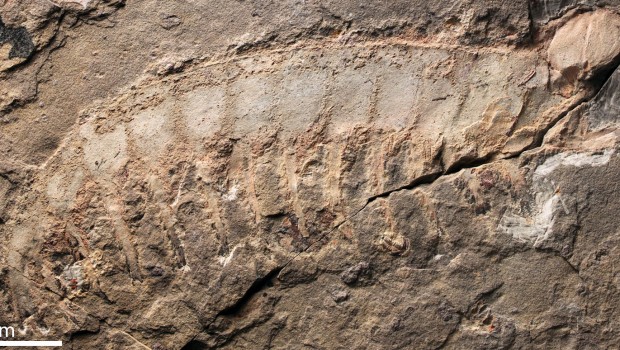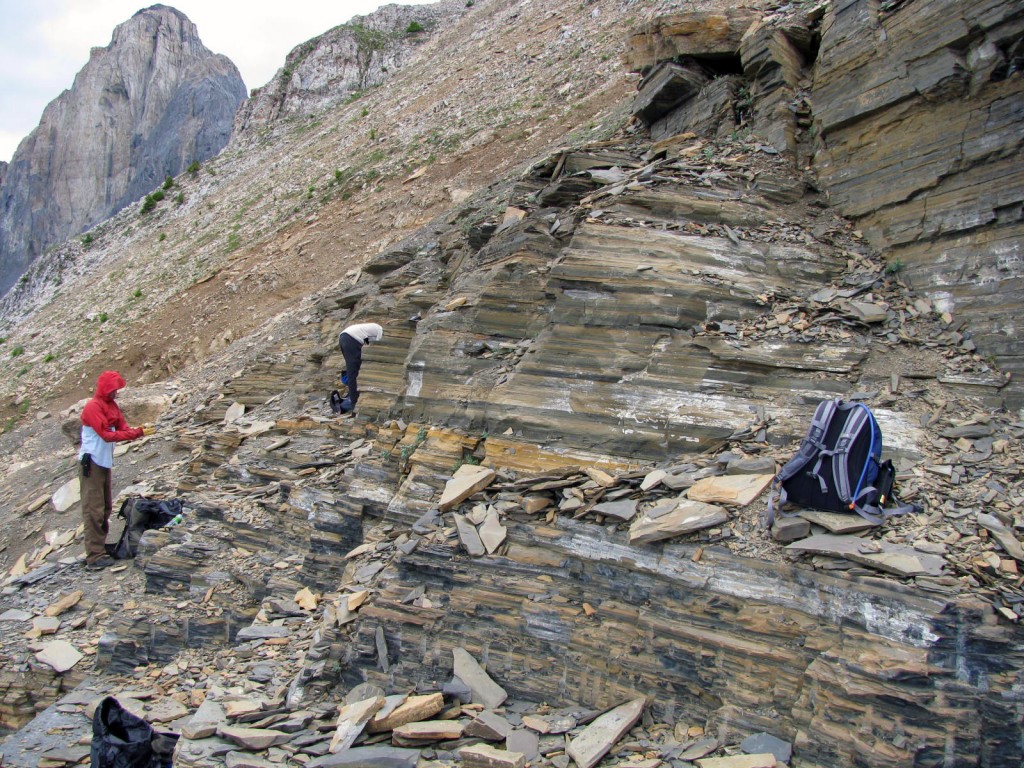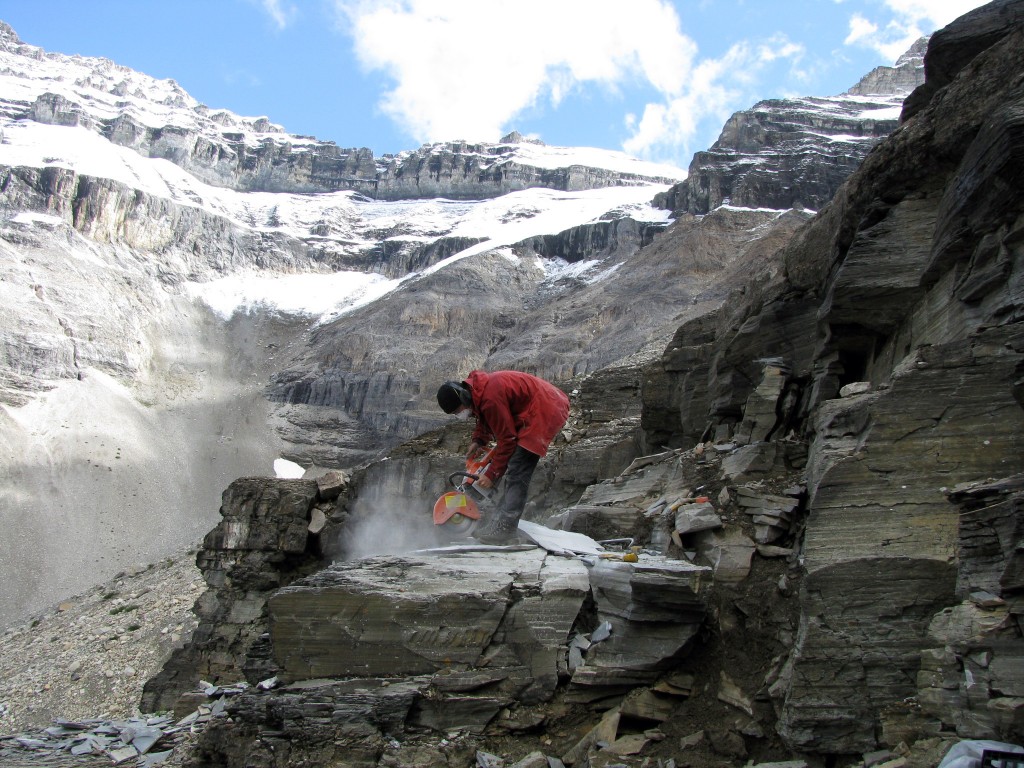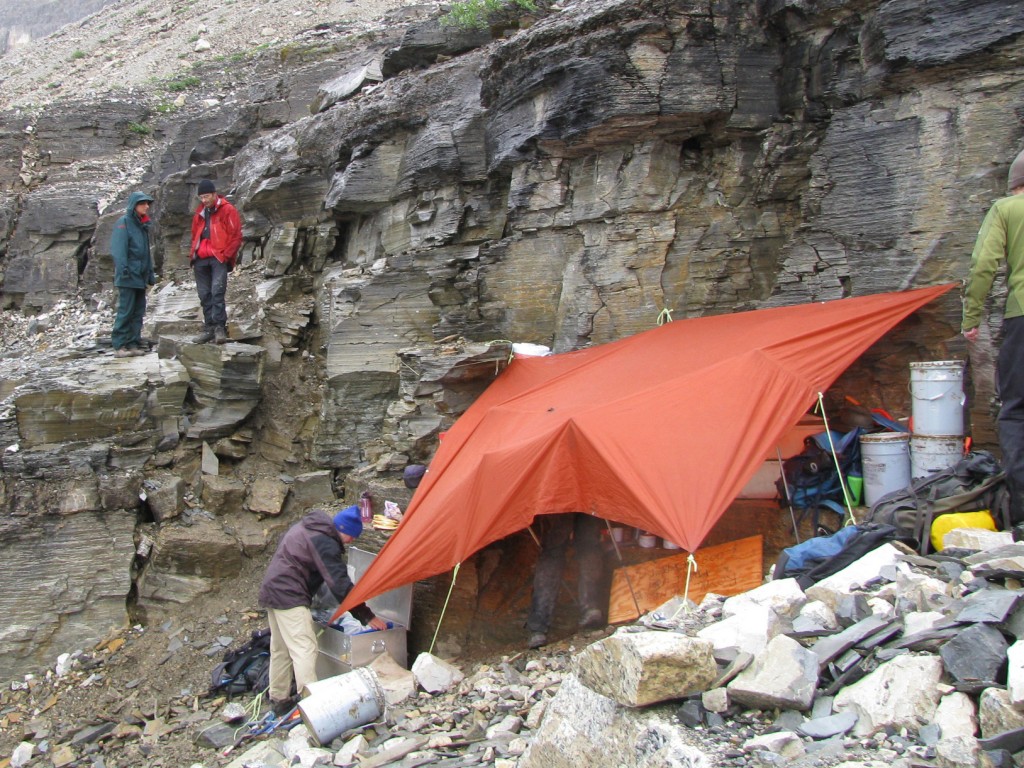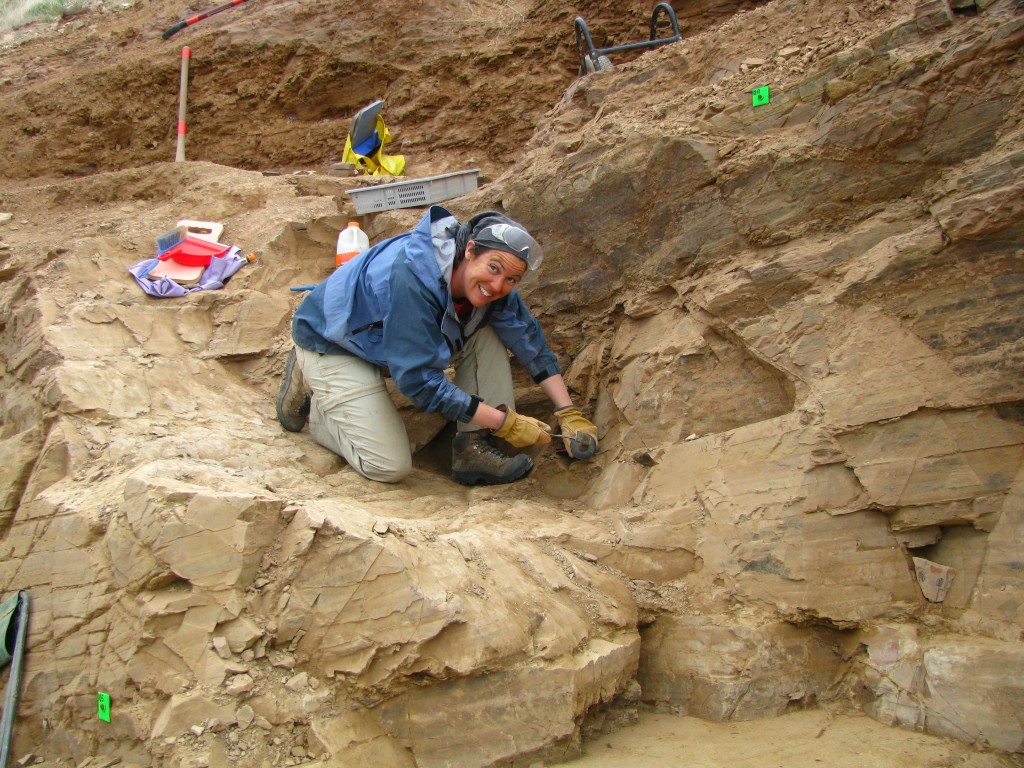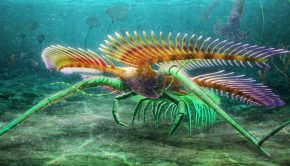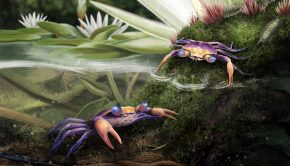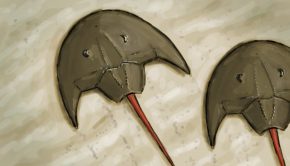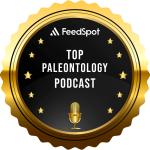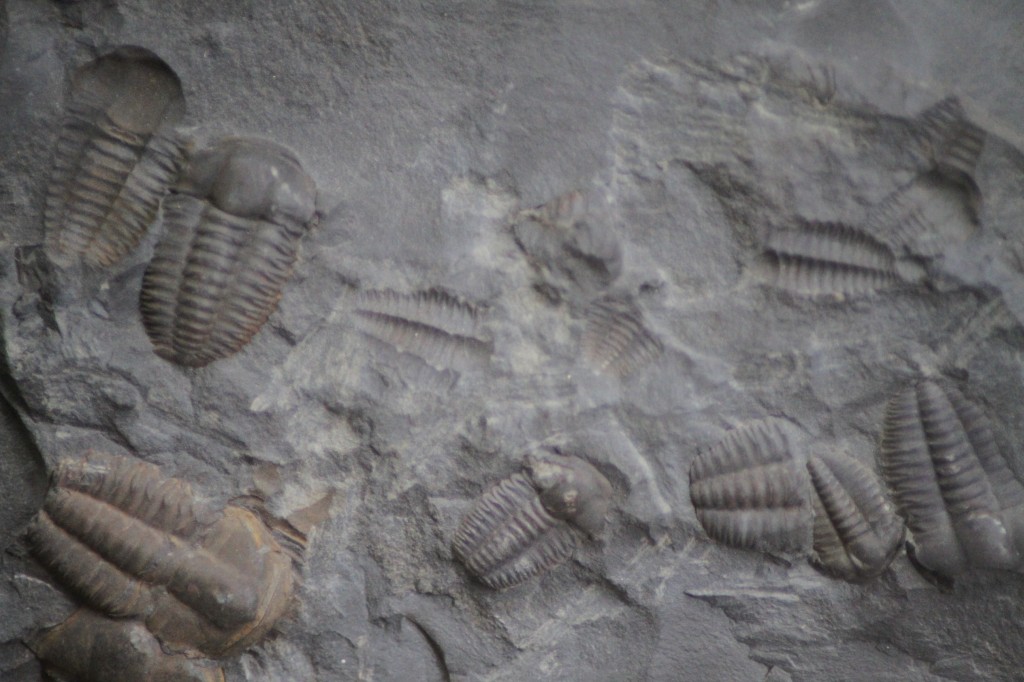Episode 31: Anomalocaridids
Anomalocaridids are iconic Cambrian animals, originally found in the Burgess Shale deposits in Canada. From the Genus Anomalocaris, their name translates as ‘strange shrimp’ owing to their initial misidentification from incomplete remains. In fact, it took until 1985 to realise that three different animals were all actually disarticulated parts of the same animal! Our knowledge of these enigmatic creatures has increased exponentially in recent years owing to many exciting new fossil discoveries, as well as reanalysis of old specimens using new technologies. Researchers are building up a picture of a group of animals far more diverse than previously expected, including apex predators as well as possible filter feeders and scavengers. Their temporal range is surprising too – they survived the end Cambrian extinctions when many other taxa died out, and many questions about their ecology, relationships and extinction remain to be answered.
In this episode Dr. Allison Daley, of the University of Oxford, UK, tells us of their discovery, their biology and the future of anomalocaridid research.
Podcast: Download (Duration: 42:06 — 38.6MB)
Anomalocaridids and Burgess Shale fossils:
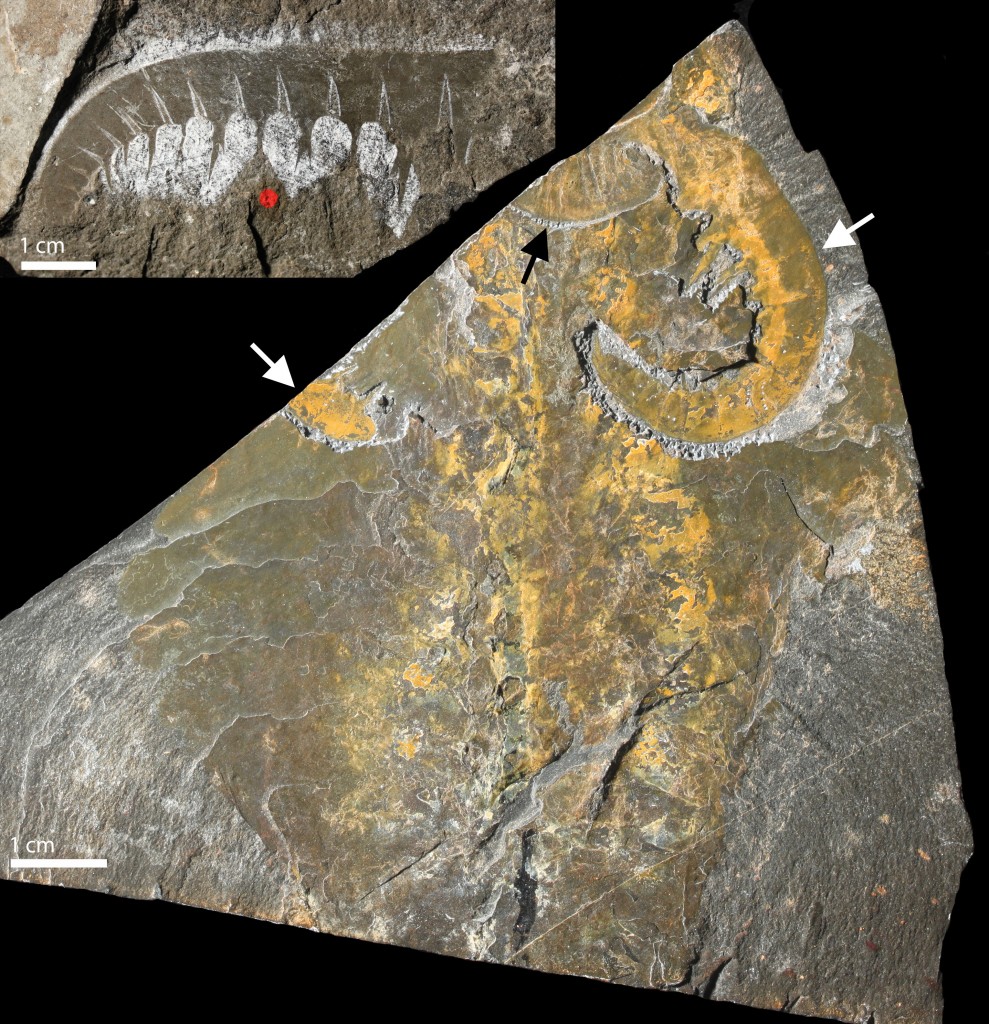
Anomalocaris from the Burgess Shale. At first, this animal was only known from isolated appendages, originally thought to represent the headless body of a shrimp (top left). The first whole body specimen was discovered when Whittington and Briggs revealed these “shrimps” were frontal appendages (white arrow in bottom right image) on the head, along with round, plate-like mouthparts (black arrow). Credit: A. Daley.
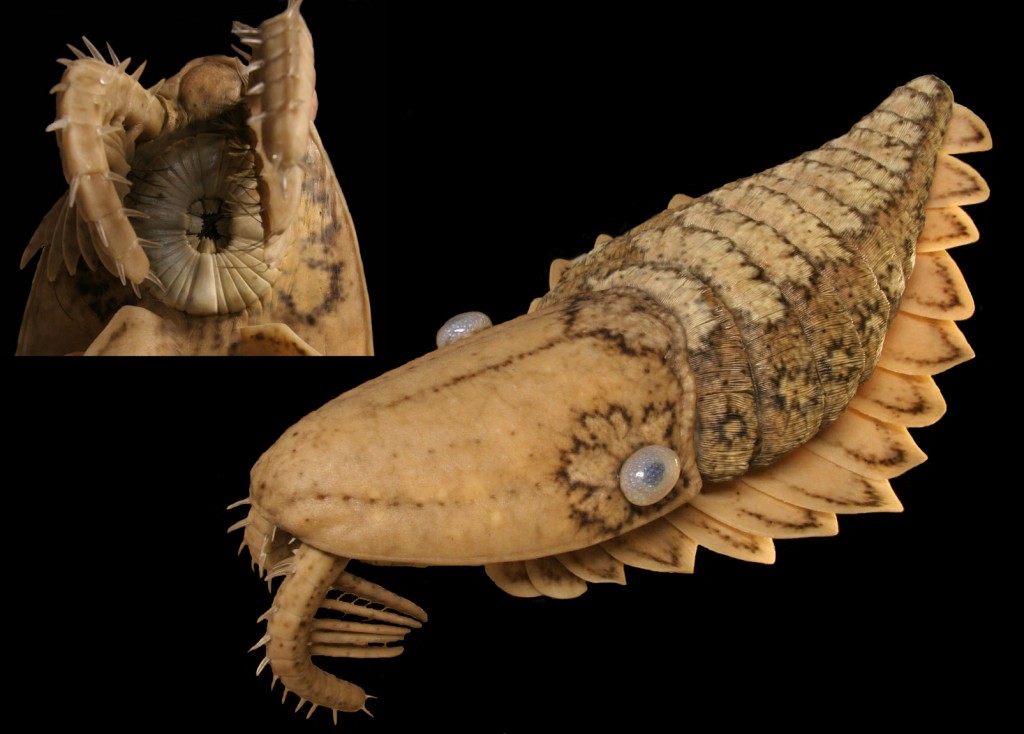
Model of the anomalocaridid Peytoia. The segmented body has a series of wide flaps and associated gill-like structures (bottom right), and the head has a pair of large eyes, frontal appendages and a circular plate-like mouthparts (top left). Credit: Esben Horn, Daley & Paterson 2012.
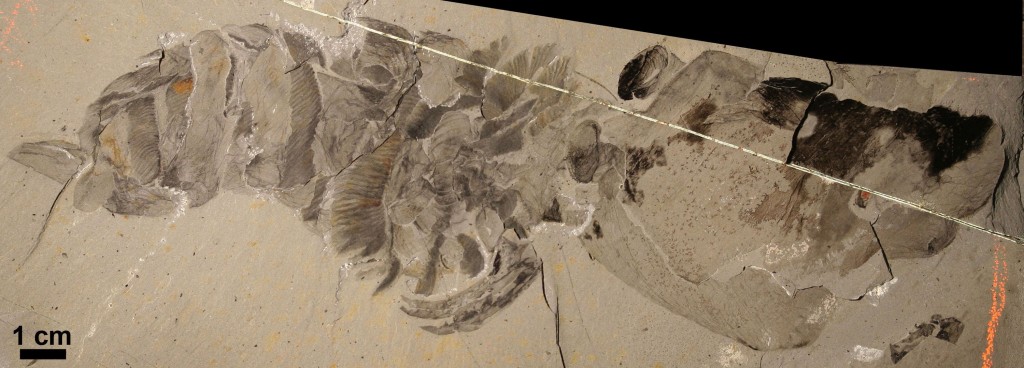
The anomalocaridid Hurdia from the Burgess Shale. This anomalocaridid was the third Burgess Shale taxon known from whole body specimens. Hurdia has an unusually large head shield, and prominent gill-like structures. Credit: A. Daley.
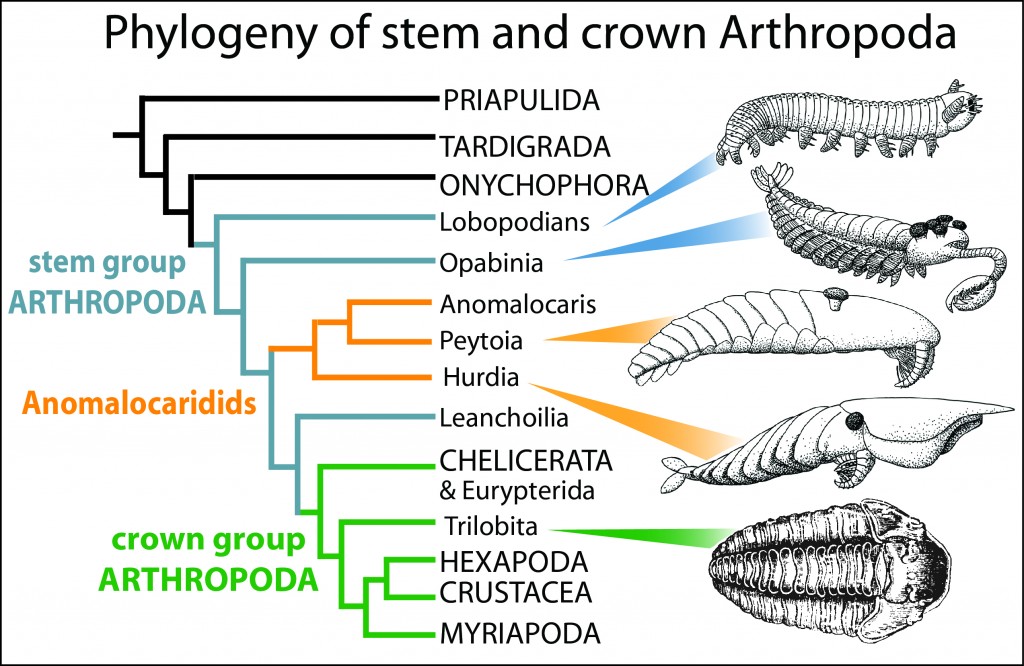
As stem-lineage arthropods, the anomalocaridids are more similar to modern arthropods than to any other animal group, but do not yet contain all the characters of the crown group. This tree shows their position in arthropod evolution. The anomalocaridids have been informative for understanding the evolution of body structures such as the head shield, biramous limbs and body segmentation. Credit: A. Daley.
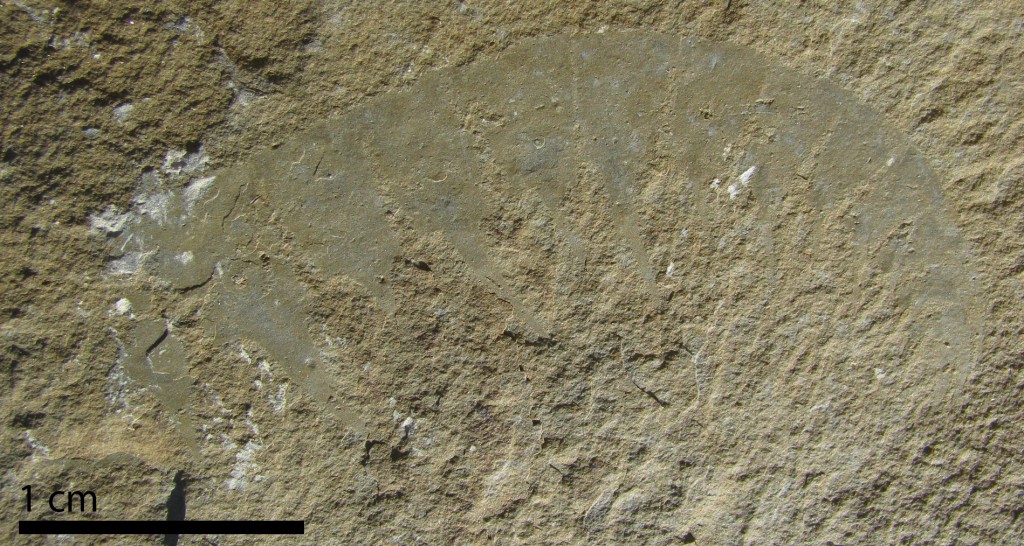
Photograph of the frontal appendage of Anomalocaris canadensis from the Mouth Stephen Trilobite Beds in the Canadian Rocky Mountains. Appendages such as these were the first part of any anomalocaridid ever described. Credit: A. Daley.
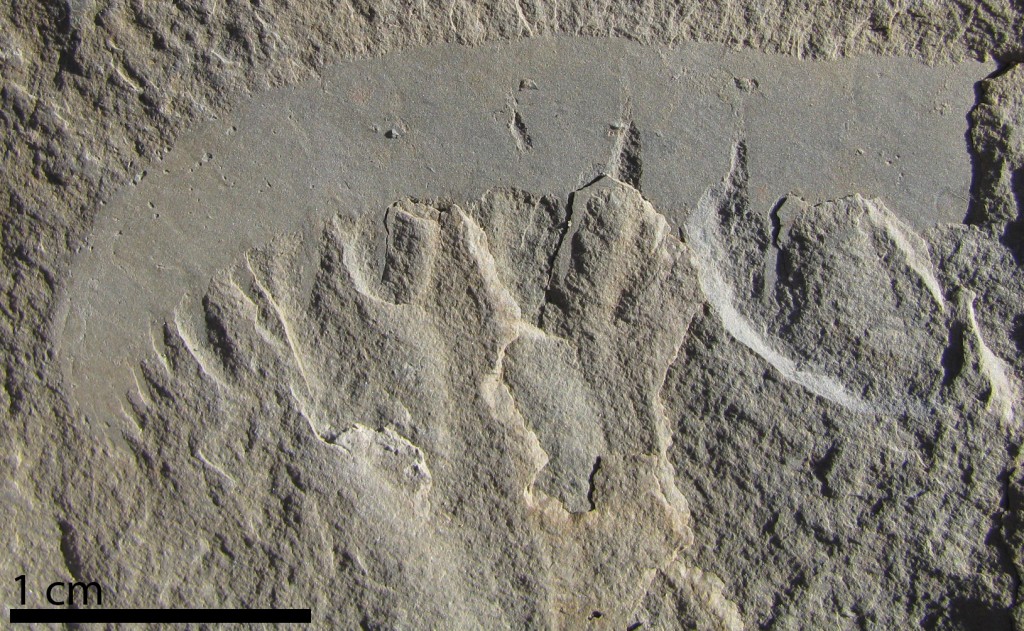
Frontal appendage of Anomalocaris canadensis from the Mount Stephen Trilobite Beds. This locality is across the valley from the Burgess Shale sites discovered by Walcott. Credit: A. Daley.
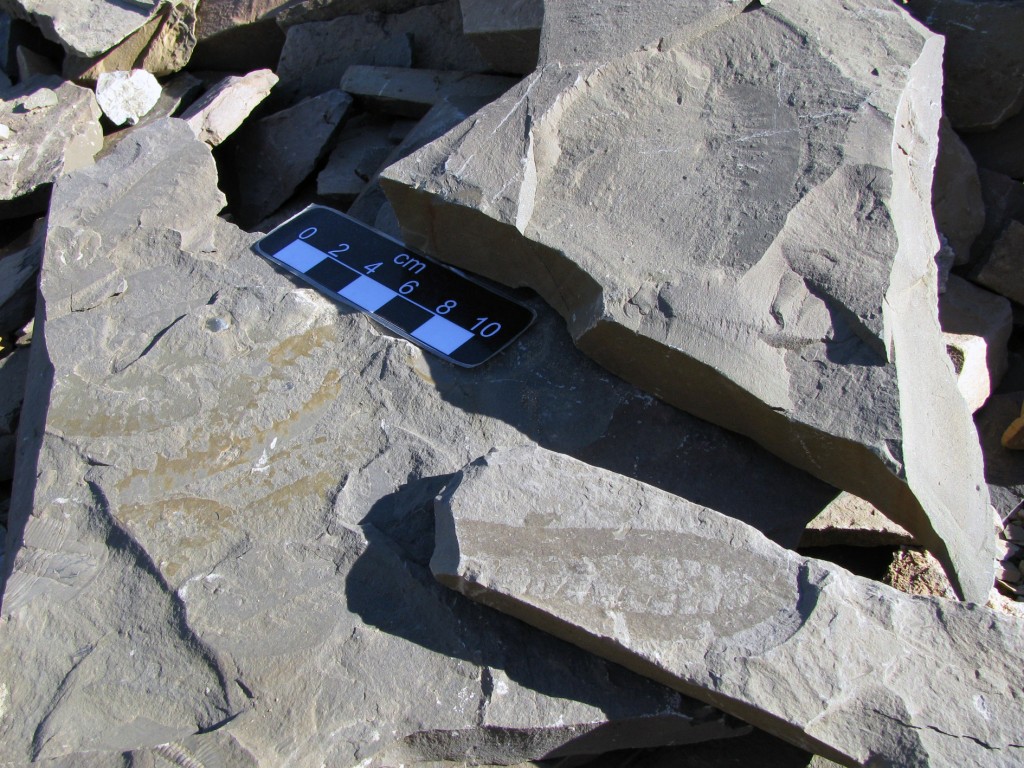
Slabs of shale from the Mount Stephen Trilobite Beds, showing several specimens of Anomalocaris canadensis frontal appendages. Credit: A. Daley.
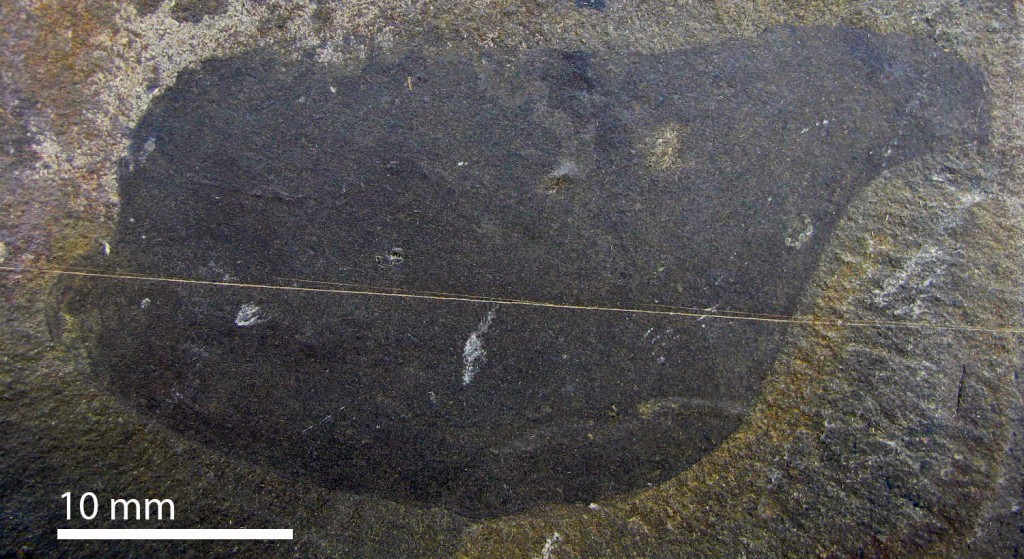
Part of the frontal carapace, or head shield, of the Burgess Shale anomalocaridid Hurdia. This carapace was originally described as an isolated fossils called Proboscicaris, until it was discovered to be the side element of the frontal carapace of Hurdia. Credit: A. Daley.
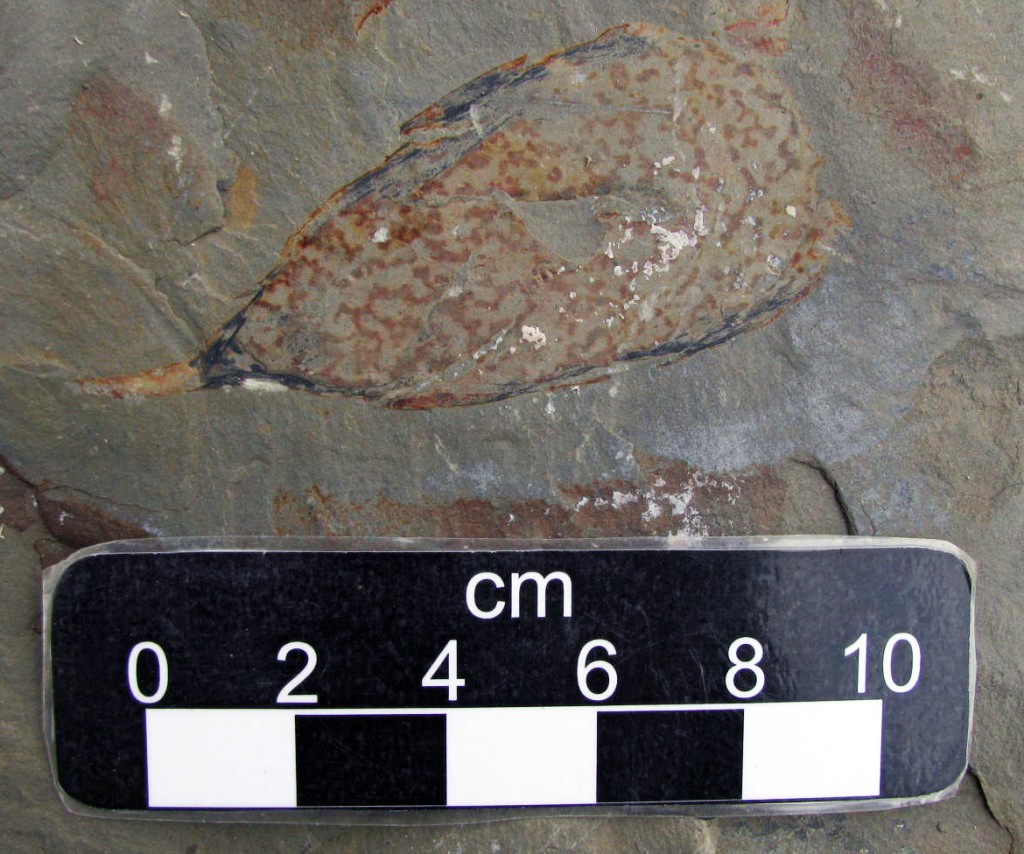
Part of the frontal carapace, or head shield, of the Burgess Shale anomalocaridid Hurdia. Credit: A. Daley.
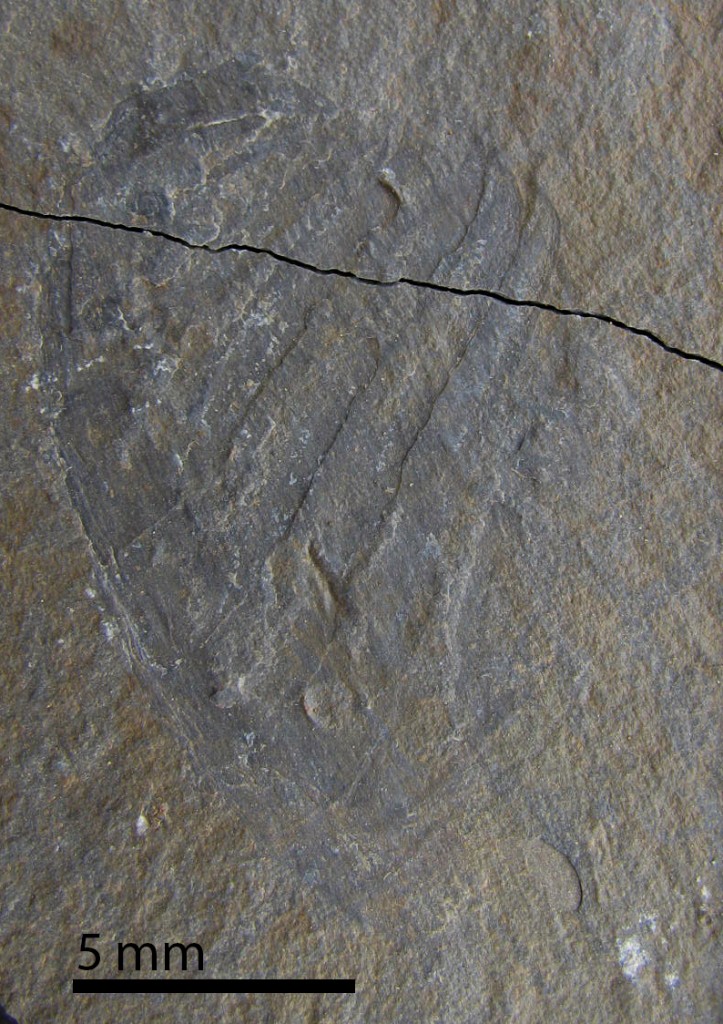
The frontal appendage of the anomalocaridid Peytoia from the Burgess Shale, Canada. Credit: A. Daley.

A partial specimen of the oral cone, or mouthparts, of the anomalocaridid Peytoia from the Burgess Shale. When complete, the oral cone is made up of 32 plates arranged circularly, with four larger plates facing each other perpendicularly. Credit: A. Daley.
Burgess Shale:
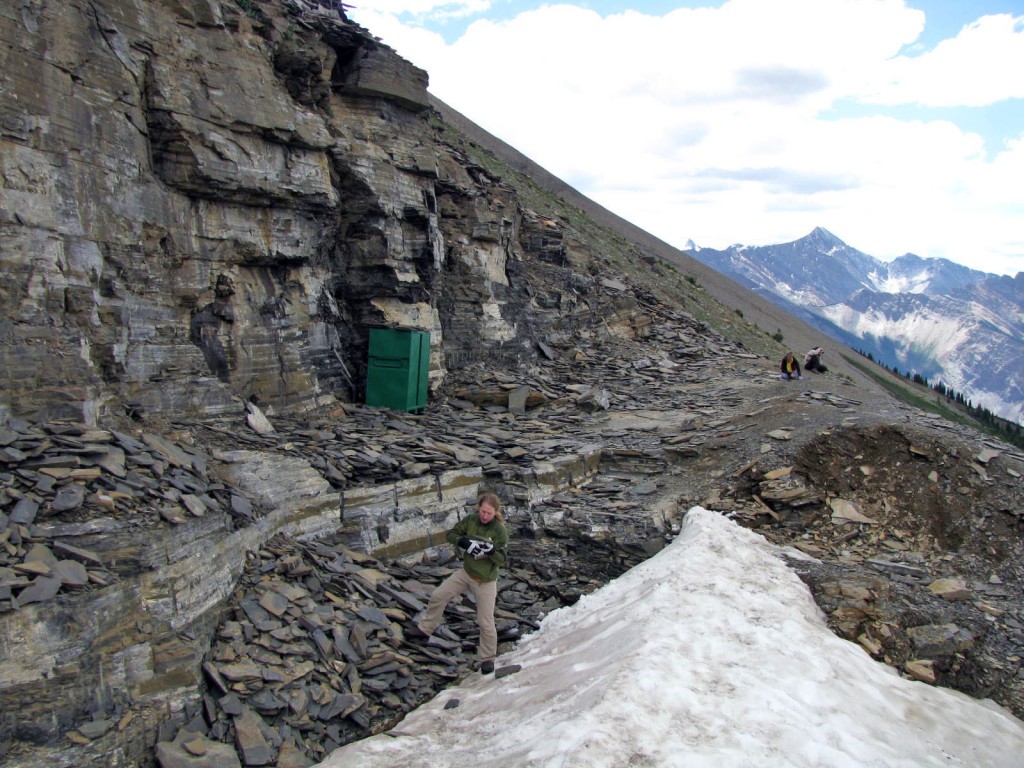
The Walcott Quarry of the Burgess Shale, located in the Canadian Rocky Mountains of British Columbia. Charles Walcott discovered this site in 1909. It yields exceptionally preserved Cambrian fossils, including full body specimens of anomalocaridids. Credit: A. Daley.
This is a view of the Burgess Shale locality in the Canadian Rocky Mountains. The video was filmed from Mt. Stephen. The first peak visible in the distance is Mount Field, and the video pans over towards the small town of Field, visible in the valley. Credit: A. Daley.
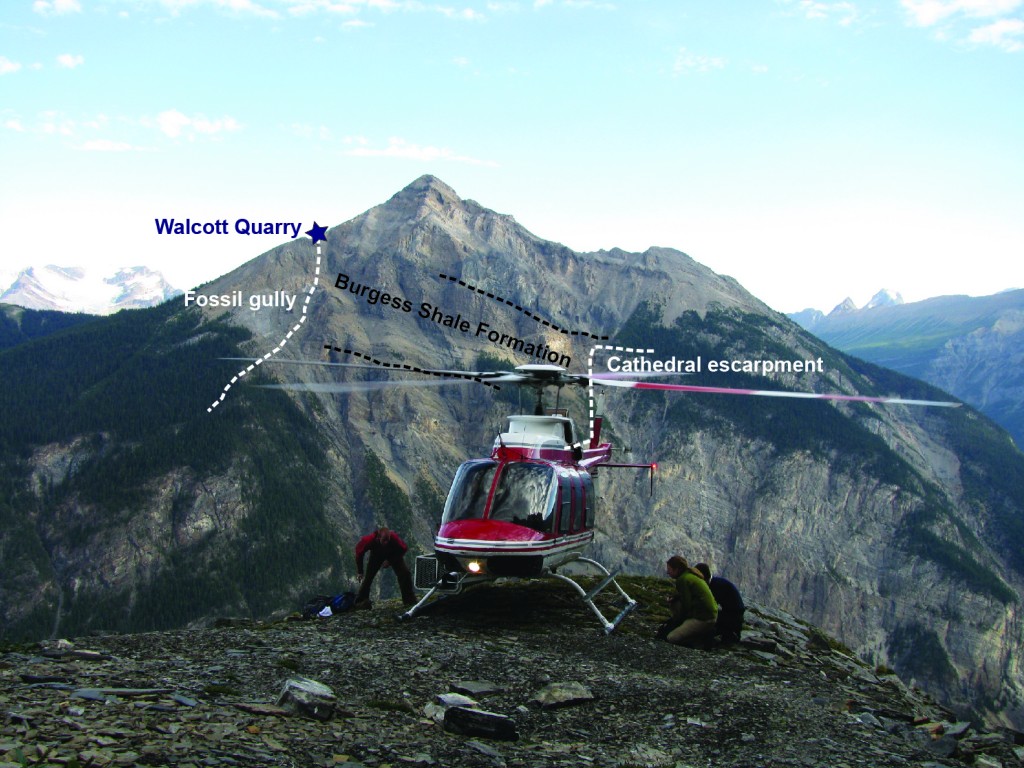
A view of Mount Field in the Canadian Rocky Mountains. Photo taken from Mount Stephen. The boundaries of the Burgess Shale Formation are indicated, along with the location of the Walcott Quarry in Fossil Gully. This is the Burgess Shale site first discovered by Walcott in 1909. The Cathedral Escarpment is a large ridge that would have been a topographic feature present in the Cambrian, and may have influenced with quality of preservation seen at the Walcott Quarry. Credit: A. Daley.
Stanley Glacier, Canada:
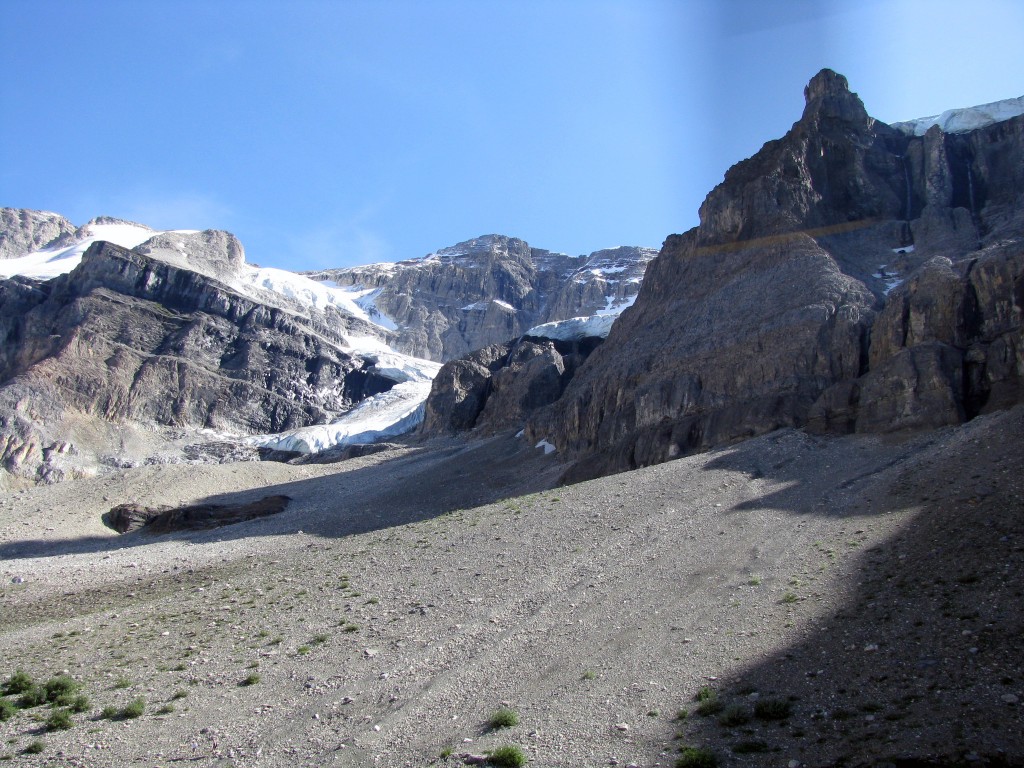
A view of the Stanley Glacier quarry, a new Burgess Shale type locality described by Caron et al. in 2010. This new sites is located 40km from the Walcott Quarry, where no evidence of a topographic ridge such as the Cathedral Escarpment is present. The depositional setting was in a relatively deep-water environment. Credit: A. Daley.
Emu Bay Shale, Australia
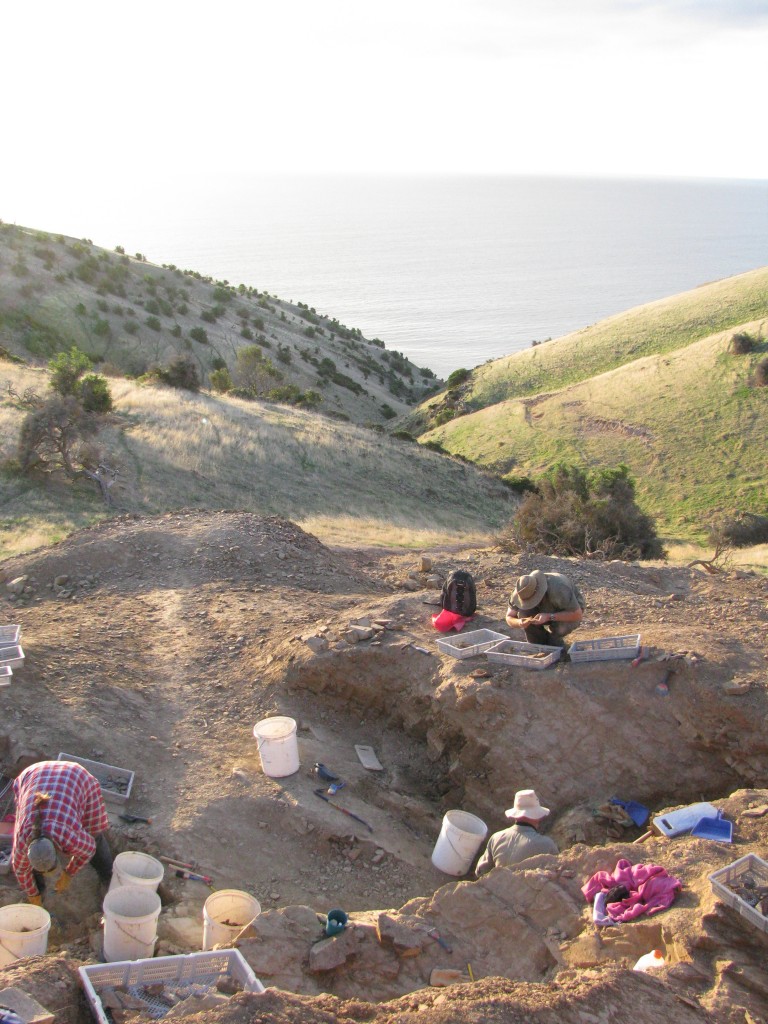
Excavation of Cambrian Emu Bay Shale fossils on Kangaroo Island, Southern Australia. Anomalocaridid fossils from this site include exceptionally preserved eyes, appendages and body flaps. Credit: A. Daley.
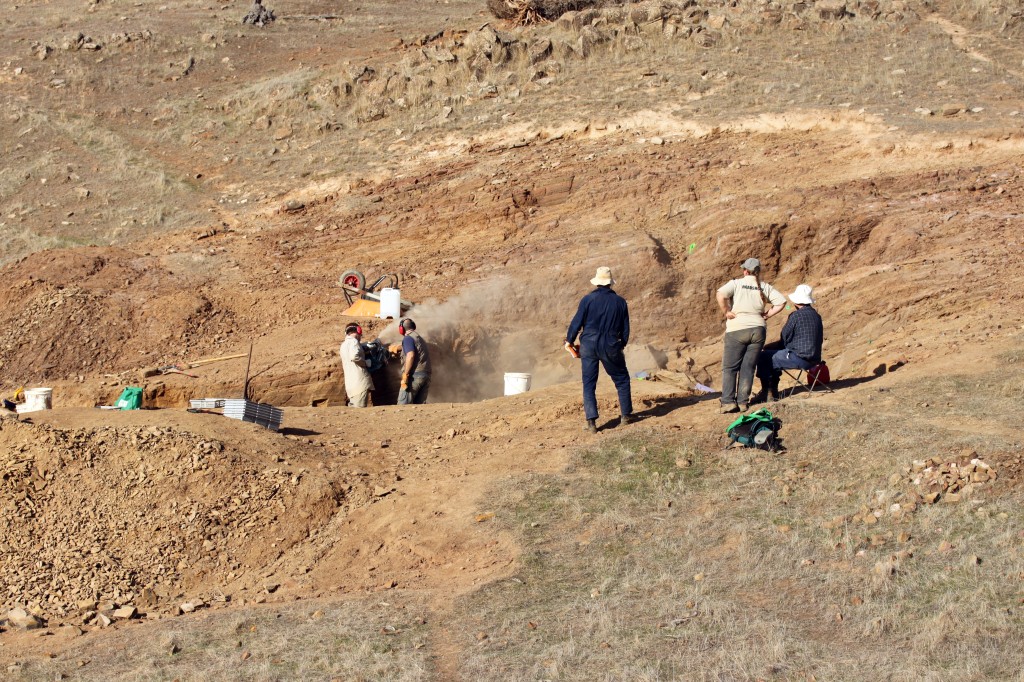
Excavations taking place at the Emu Bay Shale quarry on Kangaroo Island, Southern Australia. Credit: A. Daley.
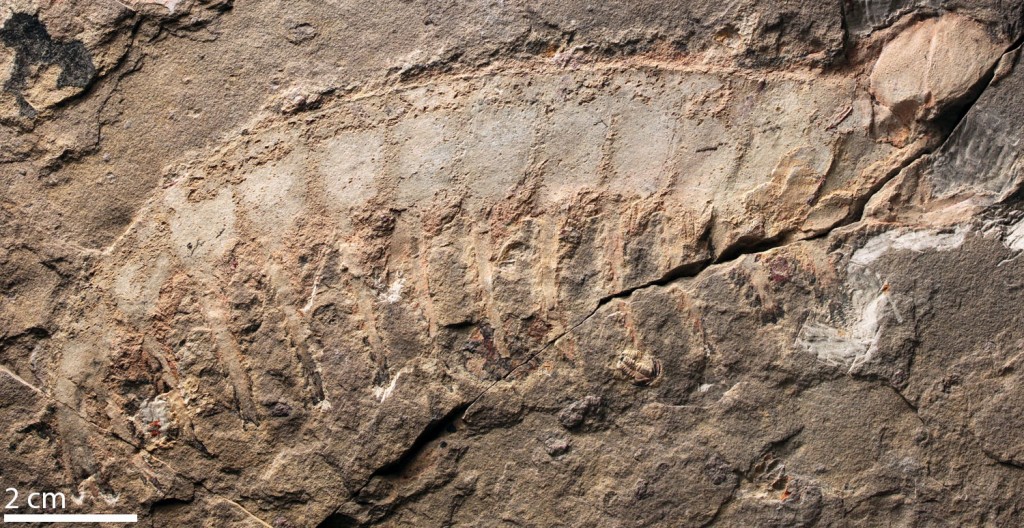
The frontal appendage of Anomaocaris briggsi from the Emu Bay Shale in Australia. These appendages are much spiner than the type species, Anomalocaris canadensis from the Burgess Shale. Credit: A. Daley.
Note: Anomalocaridids are arthropods and are in no way ancestral to whales as this media report would have you believe!

